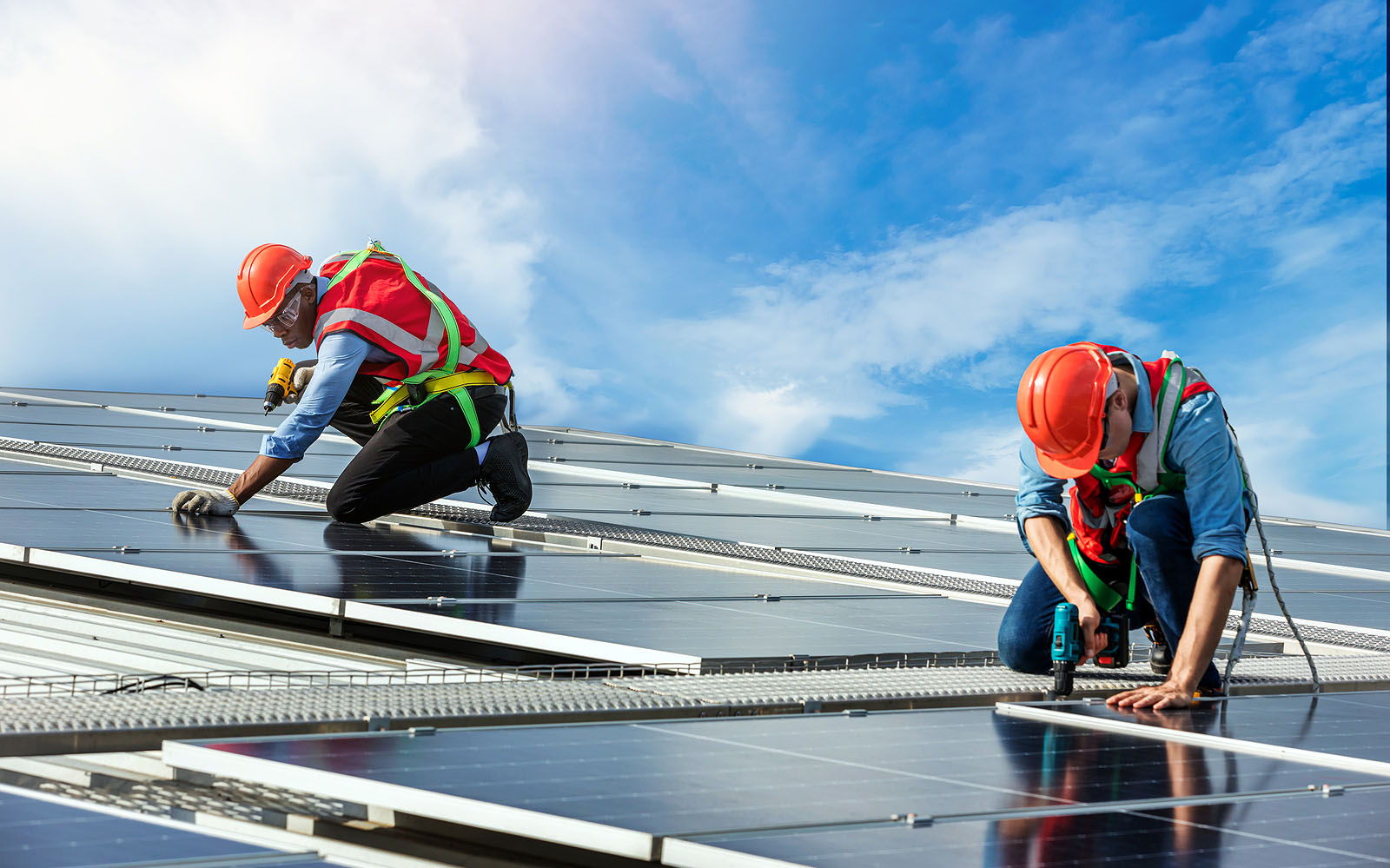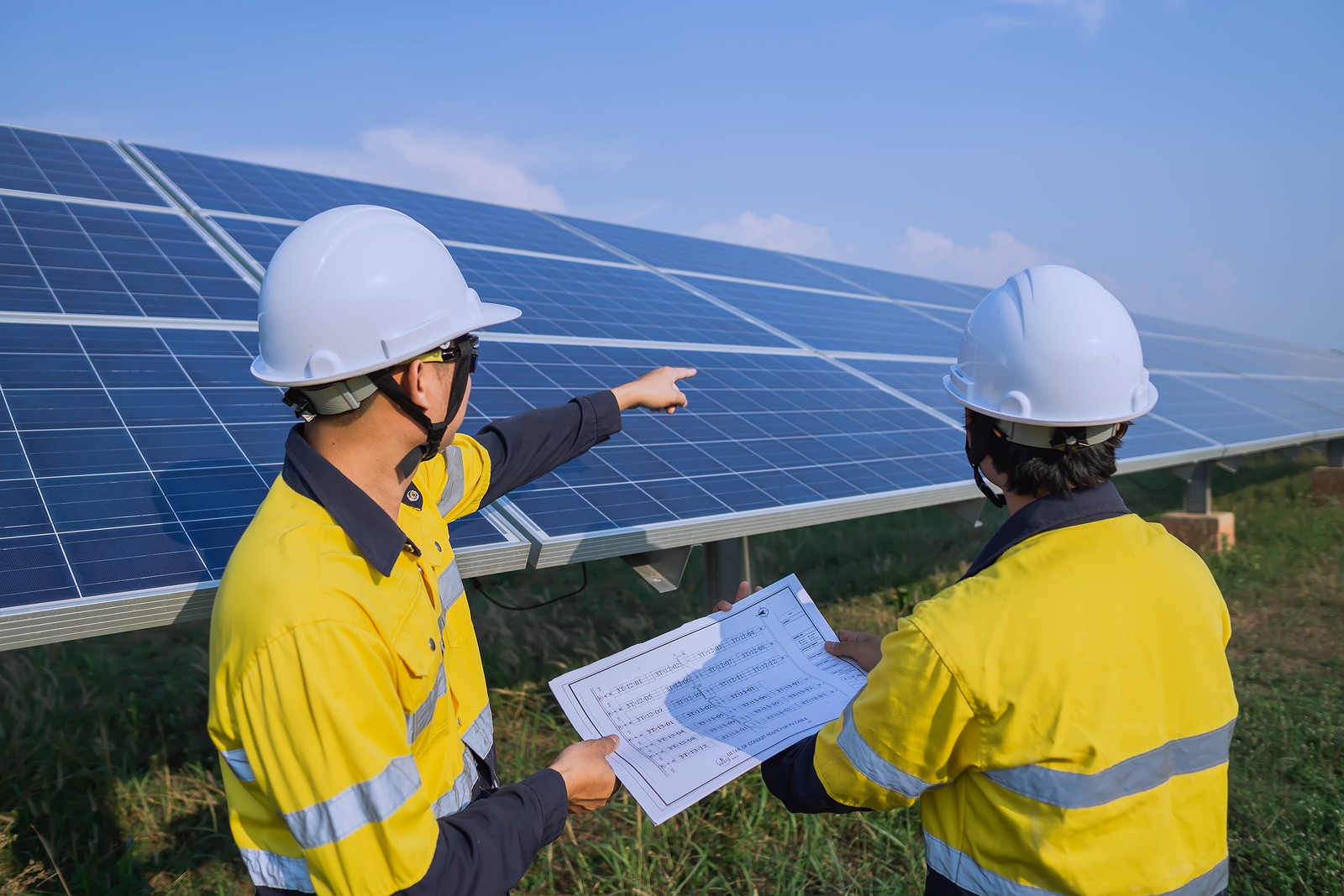Solar Installer Experience That Guarantee Quality Results
Checking Out the Various Sorts Of Solar Panels and Their Distinct Benefits
The landscape of solar panels provides different alternatives, each with distinct advantages matched to different applications. Monocrystalline panels attract attention for their efficiency and looks, while polycrystalline versions appeal to budget-conscious consumers. Thin-film technology offers adaptability in installation. Ingenious styles like building-integrated and bifacial photovoltaics even more improve the charm of solar power. Comprehending these differences is important for making notified decisions. The concern continues to be: which kind will best fulfill details power needs?
Monocrystalline Solar Panels
Although numerous kinds of solar panels are available, monocrystalline solar panels are frequently concerned as one of the most reliable alternative. These panels are made from a solitary crystal framework, commonly silicon, which enables them to convert sunshine right into power better than other kinds. The performance prices for monocrystalline panels can vary from 15% to over 22%, making them a prominent option for business and property setups where space is restricted.

Polycrystalline Solar Panels
Polycrystalline solar panels are created using a distinct production procedure that entails melting multiple silicon crystals together. This approach can result in benefits such as lower manufacturing prices, making them a prominent option for numerous customers. Nonetheless, their efficiency and performance factors might vary compared to various other sorts of solar panels, necessitating careful factor to consider.
Production Process Benefits
The production procedure of polycrystalline solar panels uses several advantages that add to their appeal in the renewable energy industry. The production makes use of silicon scrap, which reduces waste and reduces material prices, making it economically sensible. Unlike monocrystalline panels, the production of polycrystalline panels involves simpler and much less energy-intensive techniques, resulting in a smaller carbon impact. In addition, the casting process permits the production of multiple cells at the same time, improving effectiveness in manufacturing. This technique likewise results in a much more consistent framework, which can boost the overall performance and long life of the panels. As a result, polycrystalline solar panels present an affordable remedy for consumers while advertising sustainable production practices within the market.
Performance and Performance Factors
Just how do efficiency and performance aspects affect the efficiency of polycrystalline solar panels? These panels generally show reduced efficiency prices, balancing around 15-20%, compared to their monocrystalline counterparts. Factors such as temperature level level of sensitivity, shading, and the angle of installation considerably influence their performance. Polycrystalline panels have a tendency to execute better in cooler climates but might have a hard time in heats, leading to reduced output. Additionally, their performance can be impacted by dirt and particles accumulation, necessitating regular maintenance. Despite these difficulties, polycrystalline panels are a lot more budget-friendly and supply a strong balance between expense and efficiency. Understanding these effectiveness and performance aspects is essential for consumers looking for to optimize solar power production and overall system performance.
Thin-Film Solar Panels
Thin-film solar panels stand for a functional and light-weight choice in the solar power landscape. These panels are constructed by transferring one or more thin layers of photovoltaic material onto a substratum, which can include glass, plastic, or steel. This production procedure allows for greater adaptability in style and applications contrasted to standard crystalline photovoltaic panels.
Thin-film technology typically features lower performance prices, however it makes up for this with minimized production prices and enhanced efficiency in low-light problems. Their lightweight nature makes them appropriate for installation on varied surfaces, consisting of curved structures and vehicles. Furthermore, these panels can be incorporated right into building products, using aesthetic benefits alongside power generation.
Bifacial Solar Panels
Bifacial solar panels are obtaining focus for their boosted effectiveness and efficiency, as they can catch sunlight from both sides. This dual-sided design allows for raised energy manufacturing, especially in reflective settings. In addition, their installation offers potential cost advantages, making them an attractive alternative for different applications.
Efficiency and Efficiency
The performance and performance of solar panels are crucial aspects in determining their efficiency in power generation, with bifacial solar panels sticking out for their innovative design. These panels feature photovoltaic cells on both sides, allowing them to record sunlight from multiple angles. This dual-sided capability improves power outcome, particularly in atmospheres with reflective surface areas, such as snow or sand. Bifacial solar panels can raise power production by 10-20% compared to traditional monofacial panels. Their capacity to harness indirect sunshine adds to their overall efficiency, making them an engaging choice for various applications. Developments in technology proceed to enhance their efficiency metrics, strengthening their area in the renewable power landscape as a very effective option for solar power generation.
installation and Price Benefits
When taking into consideration the advantages of bifacial photovoltaic panels, the installation process and cost benefits are substantial elements that can affect decision-making for both domestic and business applications. Bifacial panels can be placed on numerous frameworks, consisting of rooftops and ground installments, allowing for flexible release. Their ability to absorb sunshine from both sides improves energy generation without needing extra panels. This effectiveness can lead to lowered overall installation prices, as fewer units may be required to achieve preferred power outcomes. Additionally, their durability often equates to lower upkeep expenses gradually (Solar Company). Consequently, the long-lasting monetary advantages, incorporated with installation adaptability, make bifacial solar panels an enticing option for those seeking sustainable energy solutions
Building-Integrated Photovoltaics (BIPV)
Building-Integrated Photovoltaics (BIPV) stand for a significant development in solar technology, perfectly including solar cells into building materials such as roofings, facades, and home windows. This ingenious strategy not just creates eco-friendly energy however likewise enhances the looks and performance of buildings. BIPV systems can change traditional structure products, minimizing the total cost of construction while adding to energy efficiency.
The combination of solar modern technology right into building layout enables better room use, as these systems can be mounted without needing added land. In enhancement, BIPV solutions are customizable, making it possible for designers to create special styles that enhance the building's total appearance. The dual performance of BIPV-- offering both as a power generator and a structural part-- supplies substantial advantages in metropolitan settings where area is restricted. As awareness of lasting building techniques grows, BIPV is coming to be a progressively eye-catching choice for homeowners and designers alike.
Concentrated Photovoltaic (CPV) Equipments
Concentrated Photovoltaic (CPV) systems represent a sophisticated solar modern technology that mirrors or uses lenses to concentrate sunshine onto high-efficiency solar cells. This innovative strategy enables the collection of considerably more solar power than traditional photovoltaic systems. By focusing sunlight, CPV systems can achieve higher efficiencies, frequently surpassing 40%, making them specifically ideal for locations with high straight sunshine.
Additionally, CPV systems commonly require much less land area compared to traditional photovoltaic panels, as they create more power from a smaller footprint. These systems frequently include monitoring devices that readjust the discover this info here placement of the lenses or mirrors to follow the sun's motion, making the most of energy capture throughout the day. CPV technology is ideal fit for particular geographical places, where direct sunshine is bountiful, restricting its applicability in regions with frequent cloud cover - Solar Installer. Generally, CPV systems provide a promising alternative for enhancing solar power manufacturing in suitable atmospheres
Comparison of Photovoltaic Panel Effectiveness and Cost
Various solar panel technologies exist, their effectiveness and expense can significantly vary, influencing consumer selections and market dynamics. One of the most typical kinds-- monocrystalline, polycrystalline, and thin-film-- exhibit unique characteristics in performance and prices. Monocrystalline panels tend to use the highest performance rates, usually surpassing 20%, however they typically come with a higher cost. On advice the other hand, polycrystalline panels are generally a lot more budget friendly, with efficiencies around 15-20%, making them a prominent choice for budget-conscious consumers. Thin-film modern technologies, while much less efficient at around 10-12%, provide versatility and reduced installation expenses, interesting specific applications.
Ultimately, picking the best solar panel includes evaluating the balance in between effectiveness and expense. Consumers should consider their energy needs, budget restrictions, and long-term savings potential, as these elements will dictate the most effective option for their solar power system.
Often Asked Concerns
Exactly How Long Do Solar Panels Commonly Last Before Requiring Substitute?
Solar panels normally last between 25 to thirty years before needing substitute. Their sturdiness relies on various variables, consisting of top quality, installment, and local environmental conditions, which can affect their performance and longevity over time.

Can Solar Panels Operate In Cloudy or Rainy Conditions?
Solar panels can undoubtedly function in over cast or stormy problems, albeit at decreased efficiency. They still capture diffuse sunshine, allowing for power generation, though power result may be significantly lower than on sunny days.
What Maintenance Is Required for Solar Panels?
Routine maintenance for solar panels consists of routine cleansing to get rid of dust and particles, evaluating for damages, making certain links are safe and secure, and reviewing system efficiency. Regular check-ups can boost effectiveness and extend the life expectancy of the panels.
Exist Any Type Of Environmental Influences From Production Solar Panels?
Yes, making solar panels can have ecological effects, consisting of source removal, energy consumption, and waste generation. Developments in technology goal to minimize these results, promoting even more lasting methods in production and reusing processes.
Exactly how Do I Select the Right Solar Panel for My Home?

Various types of solar panels are available, monocrystalline solar panels are often pertained to as the most effective alternative. Thin-film solar panels stand for a lightweight and functional option in the solar power landscape. The effectiveness and performance of solar panels are necessary variables in identifying their effectiveness in power generation, with bifacial solar panels standing out for their innovative style. Building-Integrated Photovoltaics (BIPV)
Building-Integrated Photovoltaics (BIPV) represent a stand for evolution considerable development technology, seamlessly incorporating flawlessly including into building materials structure as roofs, facades, home windows windows. Concentrated Photovoltaic (CPV) systems stand for an advanced solar innovation that makes use of lenses or mirrors more helpful hints to focus sunshine onto high-efficiency solar cells.